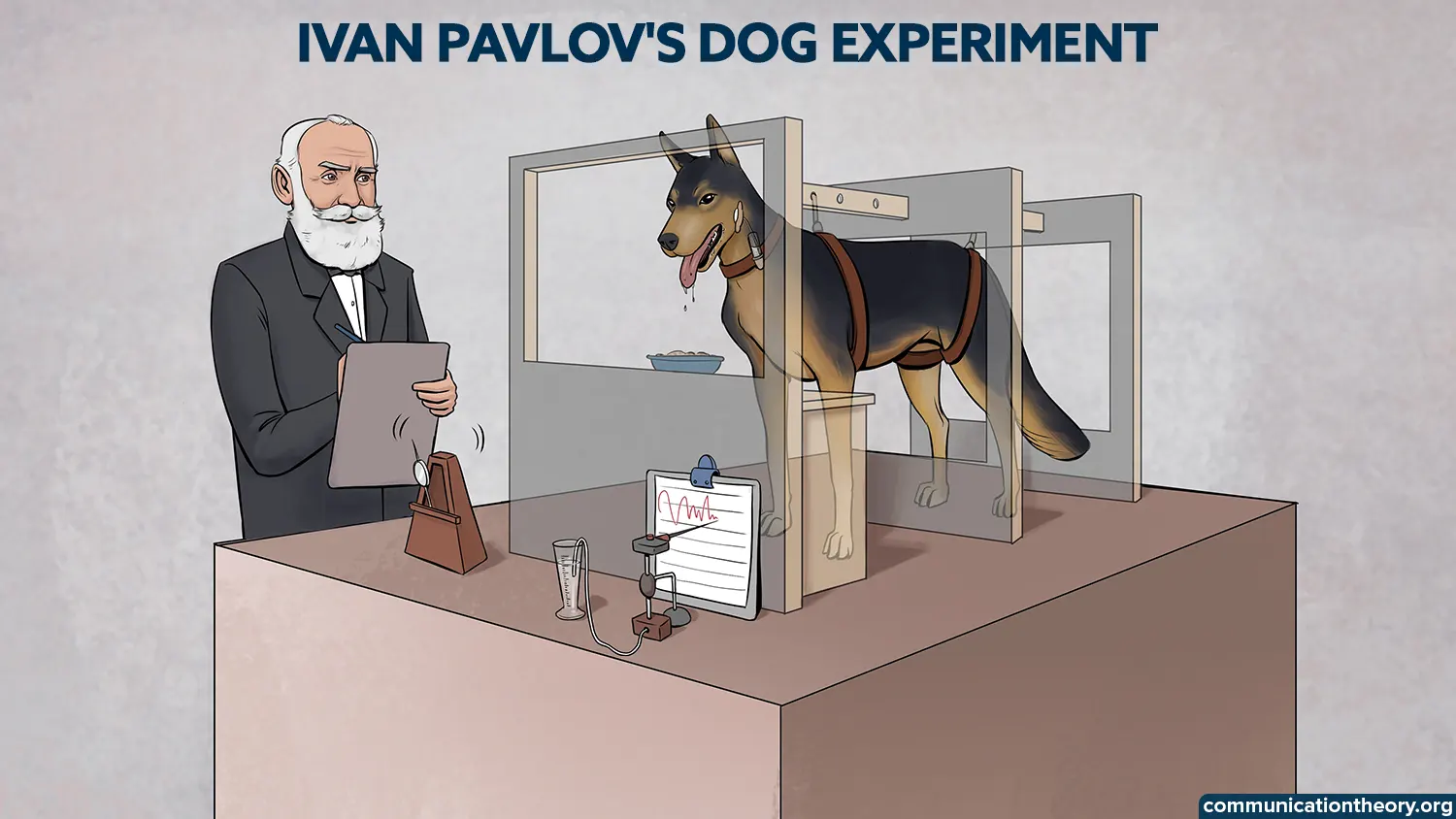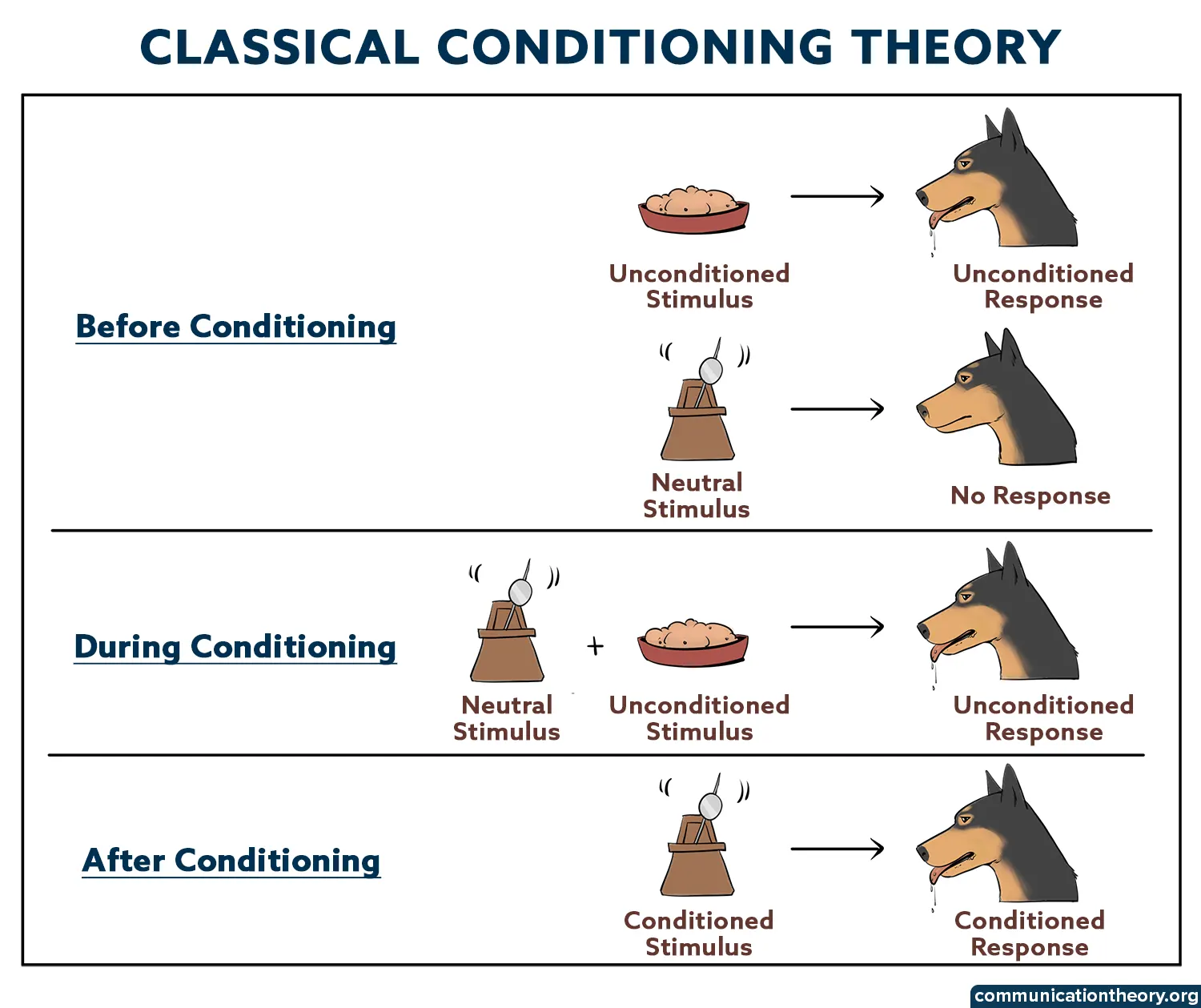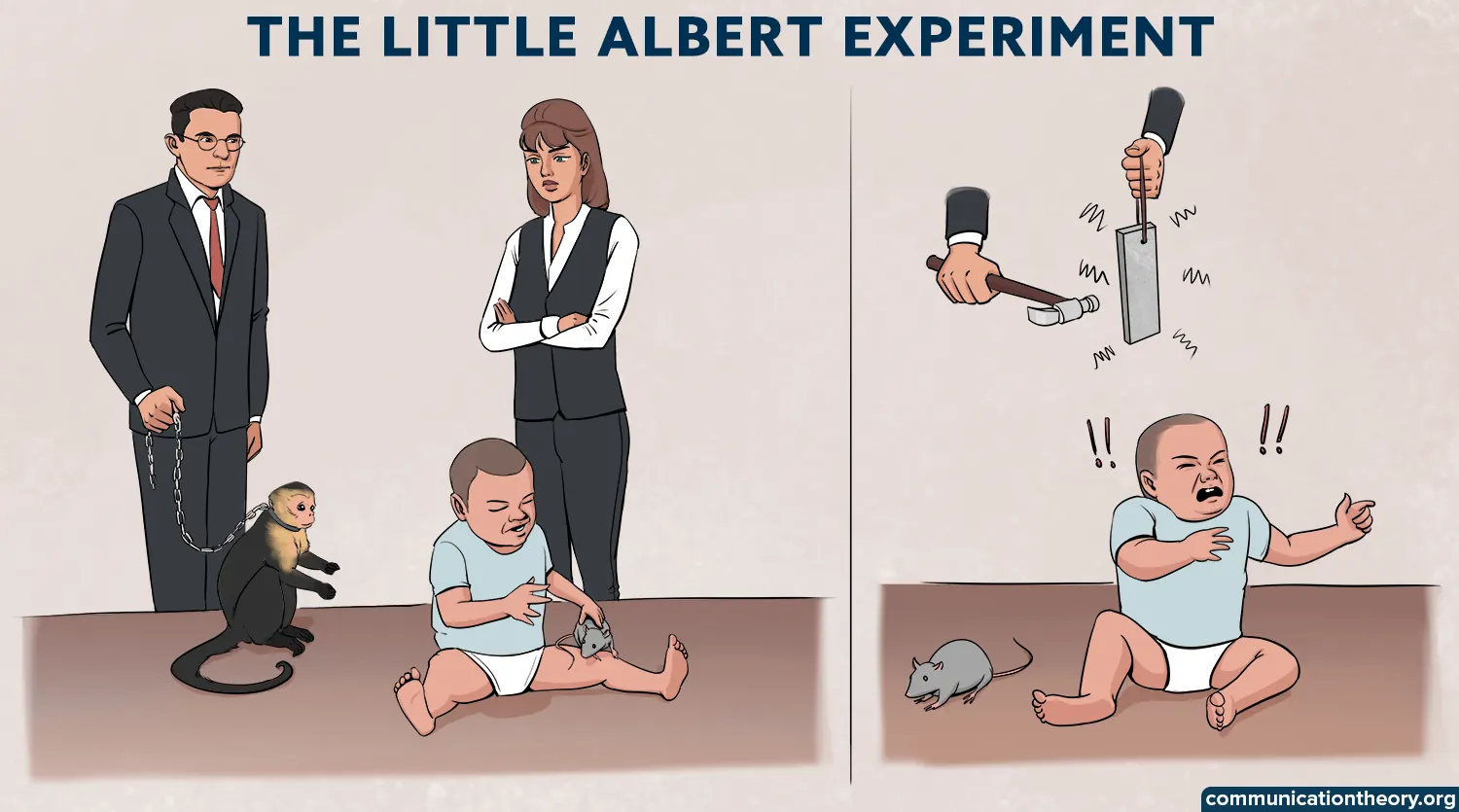Have you ever heard a song or tune from your childhood and felt an instant rush of nostalgia or happiness? That tune and the happiness/nostalgic feeling are interconnected by association, which we call Classical Conditioning.
Classical Conditioning is a psychological phenomenon in which one learns by pairing two or more stimuli to create an association. It is the process of creating a link between a conditioned stimulus and a conditioned response.

Who Discovered Classical Conditioning ?
The phenomenon of Classical Conditioning was discovered by Ivan Pavlov. Ivan Pavlov was a Russian Physiologist who was interested in understanding canine physiology and was especially interested in their digestive systems.
He began to observe dogs and their eating patterns to identify when they begin to salivate. Through his observations, he believed that dogs begin to salivate when they heard the bell that was rung before the food was presented.
To prove his theory, Pavlov built a machine that would accurately determine and measure the amount of saliva produced when the food was presented. Thus began the infamous Pavlov’s dogs experiment.
What is the Pavlov’s Dogs Experiment ?
Pavlov initially placed the food in front of the dog and recorded the level of salivation. He did this a couple of times to measure and assess why the dog was salivating.
After the first couple of trials, he began to ring a bell. He would ring the bell and wait approximately 5 seconds before presenting the food. The dogs continued to salivate only when the food was present. However, after repetitive exposure to the bell and the food, the dogs began to salivate upon hearing the bell.
This means that the dog began to associate the bell with food. This leads to salivation when hearing the bell.
Core Concept Of Classical Conditioning
This experiment led to the discovery of a type of learning called Classical Conditioning (as termed by Pavlov). The experiment was conducted in 1906 and was a major catalyst in the development and understanding of learning and behaviour theories.

The experiment consists of 4 different elements. These are:
1) Unconditioned Stimulus
This is a certain object or stimulus that triggers an automatic/involuntarily bodily response. This is an unconscious process and has not been previously learnt. In this case, the food is considered to be the unconditioned stimuli.
For example, for a student, the smell of the food from the mess/canteen is considered to be the unconditioned stimuli.
2) Unconditional Response
This is the automatic and involuntary response that occurs when presented with the object or the stimulus. This response is generally unlearnt and usually occurs due to the processes of the Central Nervous System (CNS). In this case, the salivation of the dogs is the Unconditioned Response.
For example, the hunger and salivation of the student are considered to be the unconditioned response.
3) Conditioned Stimulus
This is also known as the Neutral Stimulus. This stimulus is presented repeatedly until the association between the object and the response is formed. If the object is repeatedly presented (in this case the food), it will start to evoke the same response. In this case, the bell is considered to be the conditioned stimulus.
For example, the lunch bell is paired with the smell of the food. Hence the bell is associated with lunchtime. Therefore, the bell becomes the conditioned stimulus.
4) Conditioned Response
This is the response obtained after repeated exposure to the conditioned stimulus (which is the bell). This is the response that occurs once the stimulus and response have been associated. The conditioned response is salivating upon hearing the bell.
For example, the bell is now associated with the food from the mess/canteen. Hence, the student may get hungry/salivate upon hearing the sound of the bell. This indicates that classical conditioning has occurred.
Common Example – Conditioning Theory Of Learning
A great example of this is when you smell your mom’s perfume. You may have grown up used to the smell of your mom’s perfume. The perfume reminds you of your mother and the great times you shared when you were growing up. You are exposed to the perfume several times while growing up; you begin to associate it with happiness.
Several years later, if you catch a sniff of the perfume in a supermarket, you may associate it with happiness without actually consciously thinking of your childhood or your mother. This is due to learning by association otherwise known as Classical Conditioning.
There are three other aspects that we must understand and take into account when learning about classical conditioning. They are:
a) Extinction
This is a phenomenon in which the conditioned stimulus (i.e. the bell) is presented excessively without the unconditioned stimulus (i.e. dog food). This overexposure results in the process of unlearning. Eventually, the bell will no longer result in a conditioned response.
For example, while training children to potty train, the parents might give a reward every time the child uses the toilet. However, over time as the child continues to use the toilet, the parent will stop providing the rewards. Due to the overexposure, the child will eventually continue the behavior without association.
b) Generalization
This occurs when the conditioned stimulus is generalized, and therefore causes a conditioned response. For example, the dog may generalize the sound of other bells and may begin to salivate.
This can be found in the case of Little Albert. He was taught to fear a white rabbit using classical conditioning. However, he began to generalize that phobia to other objects of similar shape, size and colour. He also began to fear other objects such as mice, hamsters etc. This is known as generalization.
c) Discrimination
This is the opposite response to Generalization. This occurs when the person/ animal can discriminate between different stimuli and therefore will not produce the same reaction to the different stimuli.
This can be seen when one has a very certain phobia. For example, a person who has a phobia of cockroaches may not have a phobia of spiders or other insects even though they are similar.
What are the applications of Classical Conditioning in Psychology ?
Classical Conditioning has helped several psychologists understand how people learn and behave. Classical Conditioning helped pave the way for understanding certain pathological conditions (i.e. phobias, drug dependency and aversions) and their treatments. These include:
a) Phobias and Systematic Desensitization

A famous experiment conducted by John B Watson called Little Albert helps us understand how phobias are formed. Watson used the same method of classical conditioning to instil fear in a little boy named Albert. Albert was initially presented with a small rat for the first few trials.
After the first few trials, the rat was presented with a loud noise. Although Albert was initially not afraid of the rat, the association between the rat and the loud noise was formed. This resulted in causing him extreme fear when he saw the rat. This resulted in Albert having a phobia of rats.
Classical Conditioning can also be used to help get ready for phobias. This is usually done using a method of Systematic Desensitization. This treatment works by creating a hierarchy of fear. The client will identify and rank their fears from lowest to highest.
For example, a client who has a fear of lizards may feel fear at 10% while talking about them, 30% fear while looking at a picture, 50% watching a video of a lizard and 70% of fear while one is in the room.
The therapist then begins to work up the hierarchy while pairing deep breathing exercises.
For example, the therapist shows the client an image of a lizard and then guides them through deep breathing. This is repeated several times until the client no longer feels scared to see an image. They then move on to the next stage of the hierarchy.
This is what the hierarchy for herpetophobia (Fear of Lizards) would look like.
| S. No. | Behavior | Fear Rating |
|---|---|---|
| 1. | Think about a Lizard. | 10 |
| 2. | Look at a photo of a Lizard. | 25 |
| 3. | Look at a real Lizard in a closed box. | 50 |
| 4. | Hold the box with the Lizard. | 60 |
| 5. | Let a Lizard crawl on your desk. | 70 |
| 6 | Let a Lizard crawl on your shoe. | 80 |
| 7. | Let a Lizard crawl on your pants. | 90 |
| 8. | Let a Lizard crawl on your sleeve. | 95 |
| 9. | Let a Lizard crawl on your bare arm. | 100 |
Vicarious Conditioning is the occurrence of developing fear and becoming conditioned due to watching someone else.
For example, if you watch your mother running away from a spider, you may also become conditioned into thinking that spiders are something that evokes fear. This may lead to arachnophobia later on.
b) Drug Dependency and Aversion Therapy
Drugs cause a feeling of “ecstasy” or a “high”. This feeling of high results in the user repeatedly using. The feeling of ecstasy and the substance become paired, thus the user will continue to use the substance. They may even become extremely dependent on it, resulting in an abuse disorder.
Aversion Therapy is a treatment method used to combat abuse disorder. This is behavioural therapy method in which there is a pairing between unwanted behaviour and discomfort.
For example, someone who is addicted to alcohol may be required to snap a rubber band on their wrist every time they think of alcohol.
c) Classical Conditioning and Attitude Formation
Classical Conditioning has shown a significant outcome in attitude formation. Classical Conditioning has shown the ability to determine and change a person’s attitude/ feelings towards a particular object.
For example, a child grows up seeing her mother react negatively to Native Americans. Every time her mother comes across someone of Native American descent, she gets angry. She begins to associate anger with the Native Americans. She may begin to view them negatively and may even grow up and treat them the same.
Hence, classical conditioning has affected her attitude towards a certain race. This is attitude formation.
Ivan Pavlov’s experimentation with learning and behaviour caused a ripple effect throughout the psychological community. It promoted the development of several other theories of learning. It also helped us understand human behaviour and helped in the evolution of treatment methods.
So next time you come across Pavlov and Classical Conditioning, I hope this article rings a bell.
Good condition for me and I am waiting for the new one to you